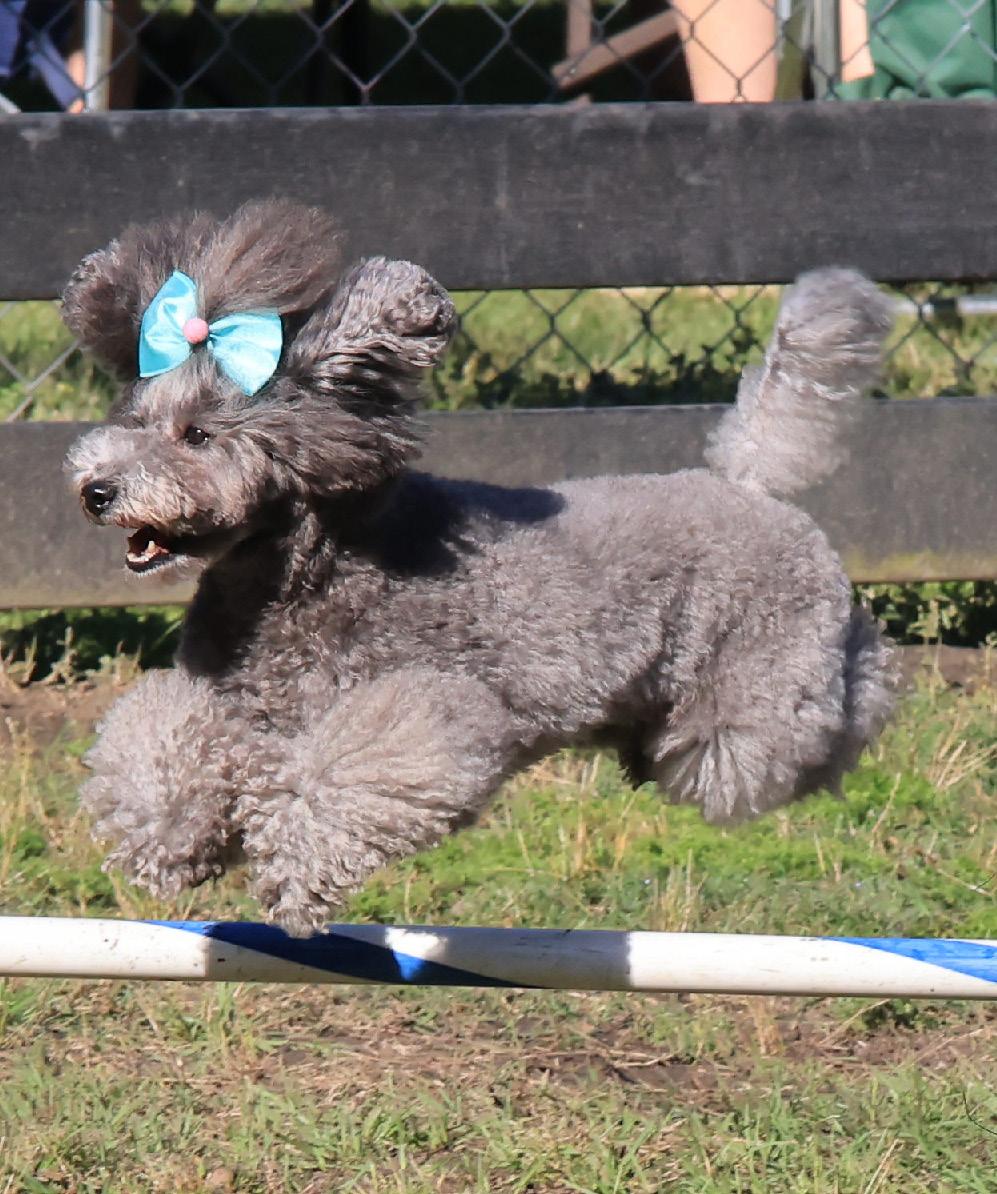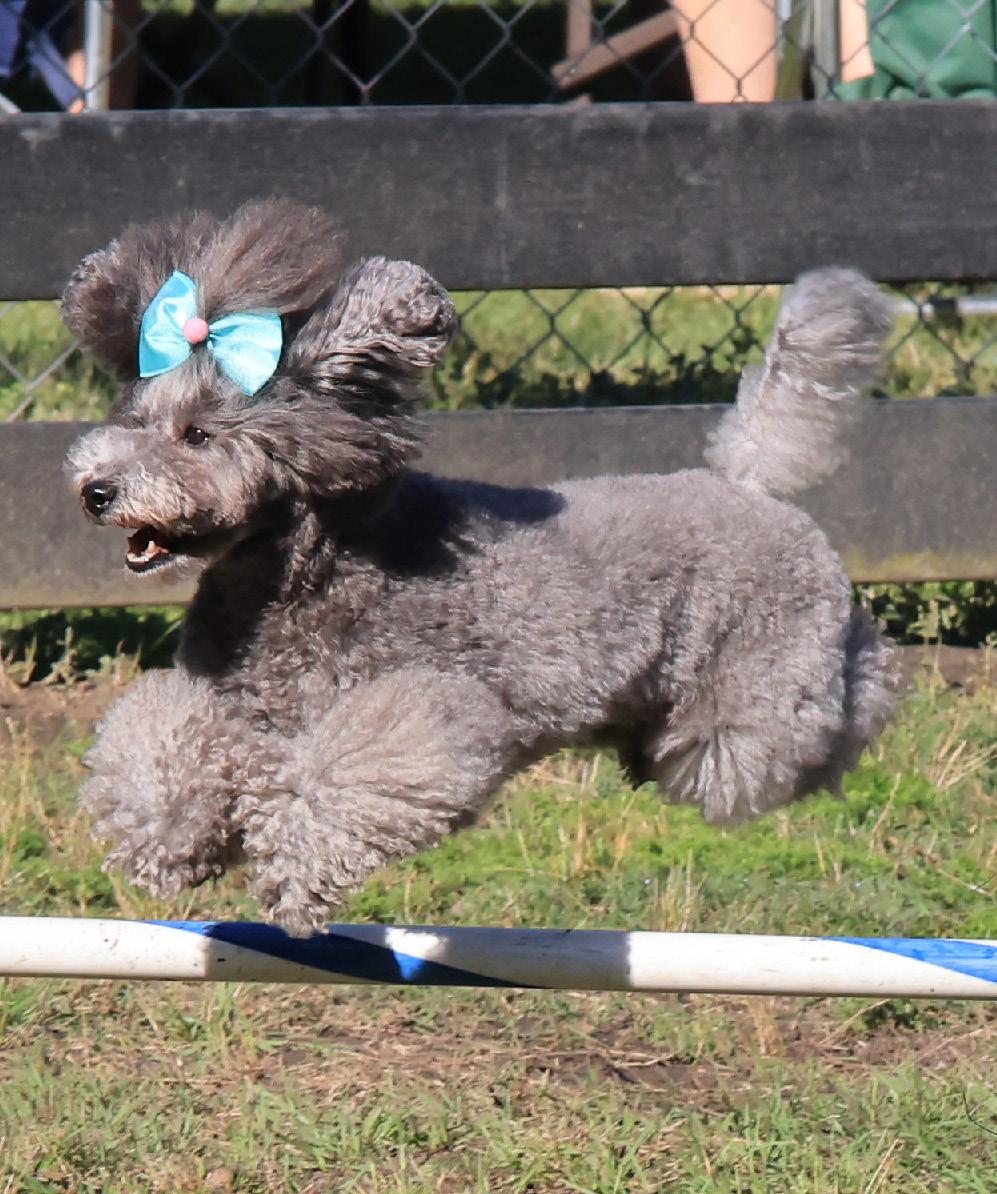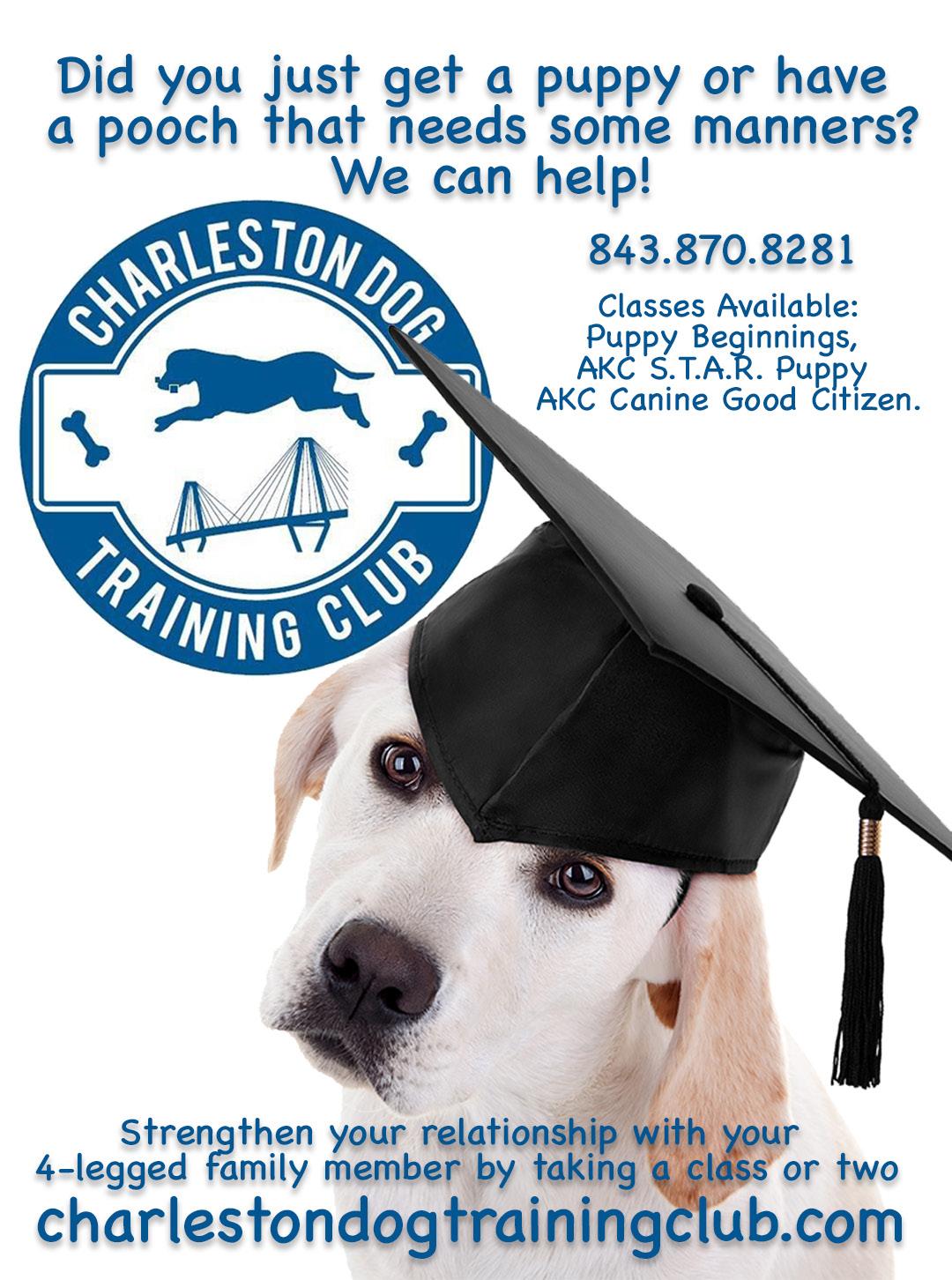
7 minute read
Agility’s Obstacles
Establishing the Foundations
WRITTEN BY HEATHER SUMMERS Certified Advanced Professional Groomer, AKC CGC Evaluator, Training Director of the CDTC, Owner and Stylist of Get Your Dog Styled
Advertisement
It has been exciting to watch in recent years how rapidly dog sports have grown and evolved. New sports have surfaced in just the last few years. I am interested in where those sports lead us and what might be possible to do with man’s best friend. As the role and status of the dog has grown dramatically, dog sports are most definitely benefiting both the dog and it’s owner as a team, which is continually building the partnership.
Not only are dog sports growing rapidly, but information and videos on the different types of sports are also readily available and all at our fingertips. This is wonderful, but, at the same time, I have found over the years having in-person instruction is a great benefit and truly needed for identifying errors and making corrections on the part of the dog handler. I also believe it is important to have a group of friends you can train with that give comradery and can be in your corner to cheer you on when you are struggling or winning in your training. This leads me to a fantastic and exhilarating sport that my dog and I have come to thoroughly enjoy in the past year and one you might know. It has built confidence in my dog, added structure to my training and built a strong bond between us. This sport is one we have here locally in our back yard in Charleston, Dog Agility.
First, let’s look back at a little history on how agility came to be.
In 1977, England’s biggest dog show, Crufts, was looking to fill spare time between their obedience championship and their group judging. A committee member, John Varley, knew about horse show jumping and decided to develop the same concept, but with dogs. Not knowing anything about dog training, he reached out to Peter Meanwell, a trainer of the Working Trial dogs in the U.K. He was asked to create a dog jumping event to amuse the audience, and that he did! In February 1978, Crufts had their first demonstration of agility and it was a success. This led led to dog agility becoming a competitive event in 1979. Fast forward to 1986, and the United States Dog Agility Association (USDAA) was formed with their first competition held that year in Houston, Texas. In May of 1990, the first USDAA title, The Agility Dog® (AD) title, was achieved by Alaina Axford and her Portuguese Water Dog, Cooper.
Other organizations started to add on to this exciting sport a few years later. In 1993, The American Kennel Club (AKC) held a committee meeting to decide whether their organization would add agility to their performance events, and they did! The following year, AKC held their first competitive event, also held in Houston, TX.
Another association, the United Kennel Club (UKC) took over the NCDA program in 1995 and started to host their agility performance events. Their Total Dog® performance events are held in Kalamazoo, Michigan each year.
All different organizations around the world now hosting agility events gave rise to the International Federation of Cynological Sports (IFCS) in 2000, which was established by the Cynological Federations of Russia and Ukraine. Their goal is to unite dog sport organizations of different countries and hold international championships. In March of 2002, the IFCS held its first world championships with six countries participating. The USA team, USDAA, brought home the team gold and individual standard gold! (Fender)
I would say it has been an exciting journey for the sport of dog agility, regardless of what organization is putting on the event.

Photography by Matt Drobnik
Are you curious to know more?
Whether you just want to have fun with your dog or want to compete in agility competitions, agility is a fast-paced and rewarding experience. There are weave poles, jumps, tunnels, tires, and more for you and your canine to navigate. Your dog will be mentally and physically challenged as well as yourself, and best of all, it is a great time shared with you and your best friend.
First and foremost, you’re going to need a dog that behaves around other dogs and people. If your dog can’t be around other dogs in a respectful manner, I would suggest finding a reactive dog trainer to get your dog in a balanced state of mind. This will serve you and your dog well, whether you do a sport or not.
You have a well-behaved dog; now how do you get started? Your dog must know and understand the stay command, whether it’s in a down or sitting position. So, your dog must also know how to sit and/or down. Your pooch will also need a release cue and a come command or what we trainers like to call as a “recall”. It should be noted that doing these commands only in your home is not sufficient for the agility field. Your dog must be able to do these skills in a distracting and busy environment. If you have to issue a command three, four, or five times... your team may need more practice.
Do you play with your dog daily or during your training sessions? If not, you’ll need to start. Play between you and your dog builds connection and makes you the best and most important, rather than everything else. The time you spend playing with your dog helps with training, and your dog will be more apt to work for you when you ask. Take some basic obedience classes to get your team on the right track. The Charleston Dog Training Club (an AKC non-for-profit affiliate club founded in 1959) has been teaching Charleston’s pet owners how to train their dogs in basic obedience and in competitive sports for decades. Our members volunteer their time to help the community learn and compete in several dog sports. If you are interested in learning more about us and the classes we offer, check us out on social media and on our website at charlestondogtrainingclub. com.

Photography by Matt Drobnik
Once your dog has achieved basic obedience skills, you are ready to begin an agility introductory (foundations) class. Foundation classes will start working on flat work and the concept of wrapping objects, two-on-two-off method and understanding our body signal cues. In agility foundation classes, your team might be introduced to the jumps and tunnels. By the end of your first 6- to 12- weeks of agility classes you will probably be hooked and ready for more, just like my dog and me.
If your team decides that agility is something you want to pursue, it will be time to start setting goals. You will need goals set to better your handling skills as well as training and class goals for your dog. Goals provide you with a path that will keep you, as the handler, and your dog motivated and moving forward as a successful team. The journey of agility training has its obstacles to master and a winding course to the top of that A-frame but once you’re there, there is no stopping either of you. (pun intended)
(Fender, 2004) History information was sourced from the journal Clean Run, article titled History of Agility, Part 1 written by Brenna Fender in 2004. ■





